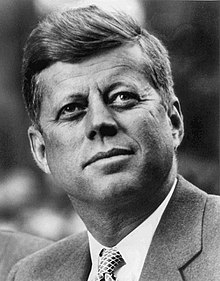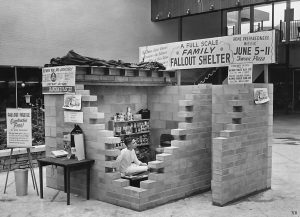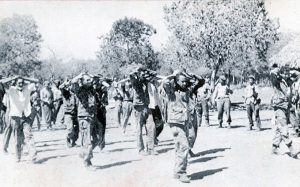bay of pigs

 For anyone alive and of an age to remember it, the 1950s and 1960s brought with them a strange new reality. I can’t say that I fully understood it all at that time, but I remember our school having a “Fallout Shelter.” They were also called a “Bomb Shelter” in some places, and the purpose was to protect the population from exposure to the fallout from a nuclear explosion. I suppose that if I had understood more about what these were, I might have been scared, but I just remember thinking it a strange idea, and highly unlikely. It did occur to me that if a bomb to explode, it would be unlikely that we would all have time to get to the school for protection.
For anyone alive and of an age to remember it, the 1950s and 1960s brought with them a strange new reality. I can’t say that I fully understood it all at that time, but I remember our school having a “Fallout Shelter.” They were also called a “Bomb Shelter” in some places, and the purpose was to protect the population from exposure to the fallout from a nuclear explosion. I suppose that if I had understood more about what these were, I might have been scared, but I just remember thinking it a strange idea, and highly unlikely. It did occur to me that if a bomb to explode, it would be unlikely that we would all have time to get to the school for protection.
Apparently, President John F. Kennedy, agreed with me on that thought, because, when he was speaking on civil defense on October 6, 1961, he advised American families to build bomb shelters to protect them from atomic fallout in the event of a nuclear exchange with the Soviet Union. We were, after all, in the middle of the Cold War, and neither side really knew if the other side would decide that they needed to start that latest, deadly type of war with the other side. Looking back, many people aren’t sure that a home-made bomb shelter would really be able to protect the occupants from the fallout of an atomic bomb. No one can really say for sure that the government-built shelters in schools and churches could either, in retrospect.
Still, prudent minds assumed that something needed to be done. Kennedy also assured the public that the United States civil defense program would soon begin providing such protection for every American. What seemed like science fiction, became a grim possibility just one year later, when true to Kennedy’s concerns, the world hovered on the brink of full-scale nuclear war when the Cuban Missile Crisis erupted over placement of nuclear missiles in Cuba by the USSR. Of course, panic ensues. The crisis lasted for 13 days, but some Americans prepared for nuclear war by buying up canned goods and completing last-minute work on their backyard bomb shelters. In the end, of course, it all ended without. After several days of tense negotiations, Kennedy and Khrushchev reached an agreement. Publicly, the Soviets would dismantle their offensive weapons in Cuba and return them to the Soviet Union, subject to United Nations verification, in exchange for a US public 
 declaration and agreement to avoid invading Cuba again. The Kennedy administration had been publicly embarrassed by the failed Bay of Pigs Invasion in April 1961, which had been launched under President John F Kennedy by CIA-trained forces of Cuban exiles. Afterward, former President Dwight Eisenhower told Kennedy that “the failure of the Bay of Pigs will embolden the Soviets to do something that they would otherwise not do.” He was right, but for now, disaster was averted.
declaration and agreement to avoid invading Cuba again. The Kennedy administration had been publicly embarrassed by the failed Bay of Pigs Invasion in April 1961, which had been launched under President John F Kennedy by CIA-trained forces of Cuban exiles. Afterward, former President Dwight Eisenhower told Kennedy that “the failure of the Bay of Pigs will embolden the Soviets to do something that they would otherwise not do.” He was right, but for now, disaster was averted.
 We have all heard the song “Home for Christmas.” It’s about a young woman falls in love and develops a long-distance relationship with a soldier on active duty, The soldier sings the song, knowing he probably won’t be home for Christmas that year. It was a bittersweet, sentimental story, that hopefully ended well for the couple.
We have all heard the song “Home for Christmas.” It’s about a young woman falls in love and develops a long-distance relationship with a soldier on active duty, The soldier sings the song, knowing he probably won’t be home for Christmas that year. It was a bittersweet, sentimental story, that hopefully ended well for the couple.
In 1962, however, the song could have taken a totally different meaning. The Bay of Pigs Invasion…failed attempt by US-sponsored Cuban exiles to reverse Fidel Castro’s Cuban Revolution, beginning with a military invasion of northern Cuba. The operation lasted just three days, from April 17 to April 20, 1961. About 1,202 members of the invading Brigade 2506 were captured, of whom nine died from asphyxiation during transfer to Havana in a closed truck. For the families of these men, as for any family of a POW, it was devastating. To make matters worse, the Cuban government wanted $53 million in food and medical supplies, to be donated by companies all over the United States, as a condition for their release. The US government agreed to the terms, in the hope of getting the men released by Christmas.
The deal made, with only one glitch, when Castro changed the deal…demanding an additional $2.9 million in cash, just as the prisoners were preparing to leave on December 23rd. The money was raised in a frantic day of fundraising on 24 December by the president’s brother, Attorney General Robert F. Kennedy, and General Lucius D Clay, an advisor to the Cuban Families Committee of prisoners’ relatives. The largest donation was $1m, given by a donor who wished to remain anonymous but was not, the government said, part of the Kennedy family. Finally on December 24th, The airlift of the prisoners began, when the first 107 men boarded a DC6  airliner supplied by Pan American World Airways at a military airbase near Havana. After just four flights, however, the operation was suspended for the night, to the consternation of the thousands of anxious relatives of the prisoners, keeping vigil in Florida for their return. Flights resumed early this morning, and by the end of the day most of the 1,113 prisoners had been safely returned. Cuban exiles in the United States arranged the return of 60 wounded prisoners soon afterwards for $2.5 million. The remainder were held in captivity until October 1986, when they were released. Ramon Conte Hernandez was the last one released, and the ordeal was finally over. As the song goes, they would finally be “Home For Christmas.”
airliner supplied by Pan American World Airways at a military airbase near Havana. After just four flights, however, the operation was suspended for the night, to the consternation of the thousands of anxious relatives of the prisoners, keeping vigil in Florida for their return. Flights resumed early this morning, and by the end of the day most of the 1,113 prisoners had been safely returned. Cuban exiles in the United States arranged the return of 60 wounded prisoners soon afterwards for $2.5 million. The remainder were held in captivity until October 1986, when they were released. Ramon Conte Hernandez was the last one released, and the ordeal was finally over. As the song goes, they would finally be “Home For Christmas.”

